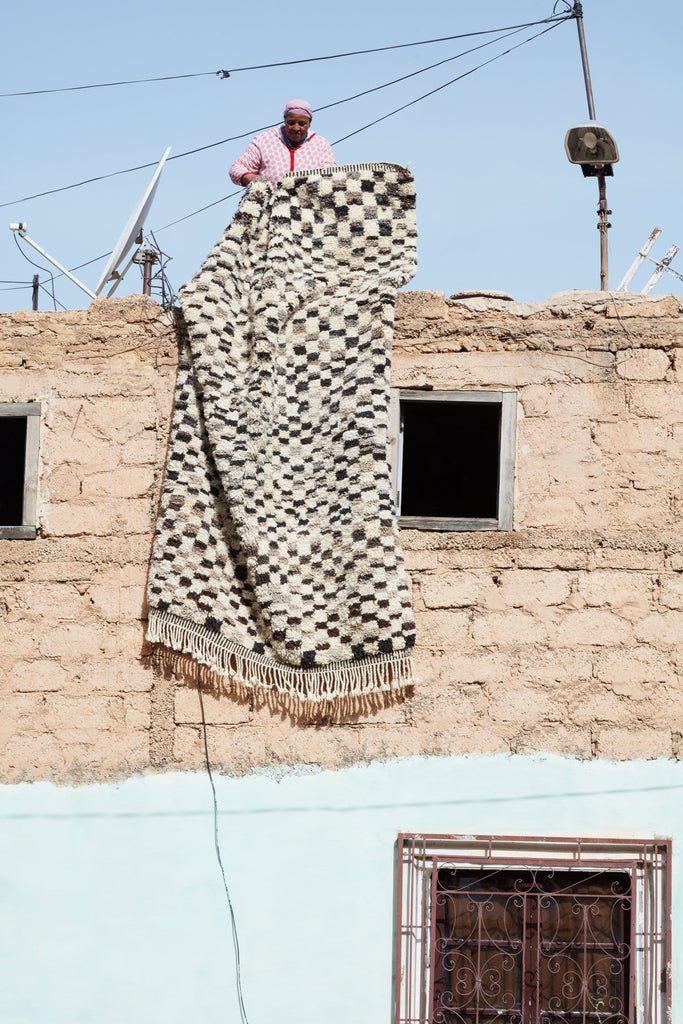
Tête-à-tête
Byron Bay sculptor and artist Marco Santucci
Based in the Byron Bay hinterland, Marco Santucci is a local sculptor and painter whose practice organically shifted towards furniture design.
With a rich background in the arts, Marco's designs transcend mere functionality, transforming into breathtaking decorative objects that are influenced by cubist and futurist design, and has wonderfully brutalist qualities.
Having previously worked alongside skilled jewellers, Marco honed his craft in the intricate art of precious stone cuts. This experience sparked his inspiration for the awe-inspiring Gem Furniture Collection— a captivating series of decorative pieces that seamlessly integrate function and artistry.
We had the pleasure of speaking with Marco, exploring the origins of his creative path and how it guided him here.
What is your earliest memory of creative exploration?
There were many very early on but most were theatrical and performance based, not that I realised it then.
When I was about 13, I started attending live drawing sessions on a weekly basis at an artist studio in Princes Hill, Melbourne. A community centre called One C One - which is still going. I was very fortunate to have an older artist/painter sister who would take me along. I learned to draw and paint the human form here and realise l could do this for the rest of my life. I continued here until my art college years.
How did your background in art making influence your transition towards furniture design?
My introduction into furniture making was coincidental. A close friends father was and is a master woodworker from Venice, Italy. He was working on a restoring a collection of antiques some of which required some relief work. I had just finished at art college where I majored in sculpture and had done some woodcarving. I was asked to help with the restoration, and ended up staying on for a number of years, where I learned traditional furniture making. In my own practice today, furniture making as with sculpture is mostly form based, materially lead.
Can you tell us about your artistic influences and how they inform your furniture designs?
I'm not sure that they do influence my furniture practice. I try to keep my art and furniture separate, and I do not see furniture as art and art as furniture. Furniture making is a craft that may share some of the methodology of making art, but rarely does. Some of the aesthetic may be shared coincidentally.


"I do not see furniture as art and art as furniture. Furniture making is a craft that may share some of the methodology of making art, but rarely does. Some of the aesthetic may be shared coincidentally."



What inspired you to create the Gem Furniture Collection?
I wouldn’t say they were inspired. The heavens didn’t open revealing an angelic vision. I have always enjoyed the work of Cubist Raymond Duchamp-Villon and Futurist Umberto Boccioni. Years ago a made a series of bronzes inspired by the facets of cubism and the movement of futurism. Then 2 years ago I had a lump of wood in my studio yard that had a particular chainsaw cut. With that I recognised some of the facets and movements that I had worked with before. From here the first Gem Coffee Table was made. The work I had done previous with gem stones and jewellery perhaps further informed the process.
Can you walk us through your creative process when designing and crafting a new piece of furniture?
I have a lot of ideas in my head, perhaps too many. Then there might be a trigger that sets them off - something that I’ll see in nature or an object that I have found. I have many boxes, buckets and journals filled with oddities that trigger these ideas into reality.
" In my own practice today, furniture making, as with sculpture is mostly form based - materially lead."
How do you balance the aesthetic qualities of your furniture with their functionality?
There a set of rules & guidelines that inform the practical application of making furniture. They have evolved over the centuries out of commonsense. Tables heights, sizes per no. of seats etc, and they are generally accurate. You can of course google them. When I approach a table design, I try to remove all the technical and functional elements which contrive the creative process. Squint my view of what’s expected functionally and hope the client is open to the possibility of a different, elegant and contemporary aesthetic.
Can you speak to the materials you use in your furniture designs and your approach to sustainability in your work?
I’m a hoarder of materials and see possibilities in unusual places. I find most of my material on wood heaps - the side of the road, on the beach, in water ways and occasionally from commercial suppliers who have responsibly and sustainably sourced their stock. I do not waste.

Can you describe a particularly memorable or rewarding project you have completed in your career as a furniture designer?
I once made a long console steel display cabinet for an up-market boutique in Melbourne. I had a large sheet of 8mm mild steel on the floor, drew organic chalk lines on it , cut the lines, put the pieces through a rolling press, did some welding and finishing. I lined the internal display area with a white goat skin and I was mostly done in a day. Apparently soon after Philippe Starck commented on how much he liked it.
Tigmi is Berber for ‘my home’, what does your home of the Northern Rivers bring to your work?
Space, nature and sometimes tranquility.
What’s next for you Marco?
More one-off pieces that are more sculpturally based. And a return to sculpture and painting - proper!
Tigmi is the exclusive stockist of Marco Santucci in Australia.
VIEW MARCO SANTUCCI COLLECTION














